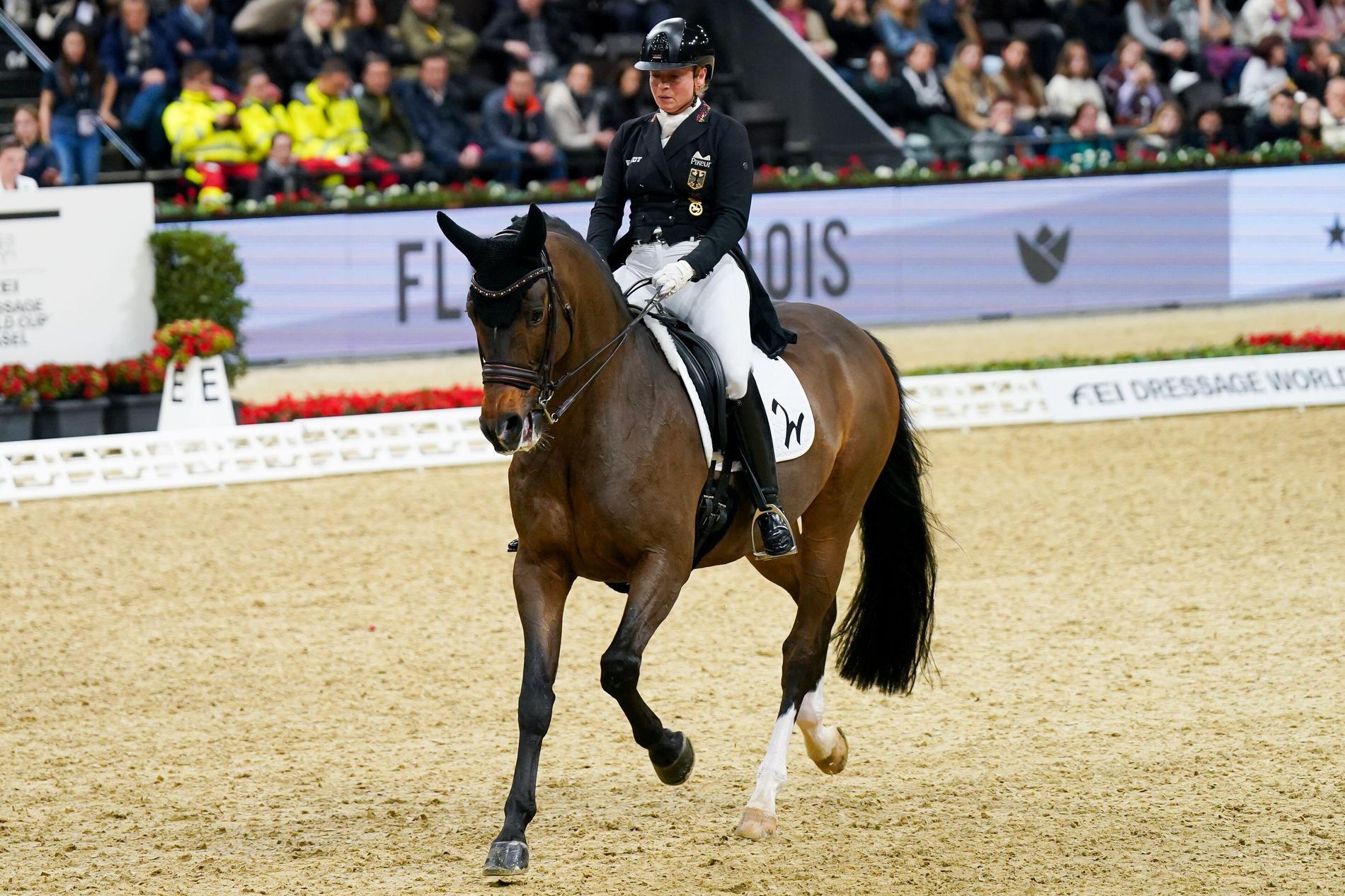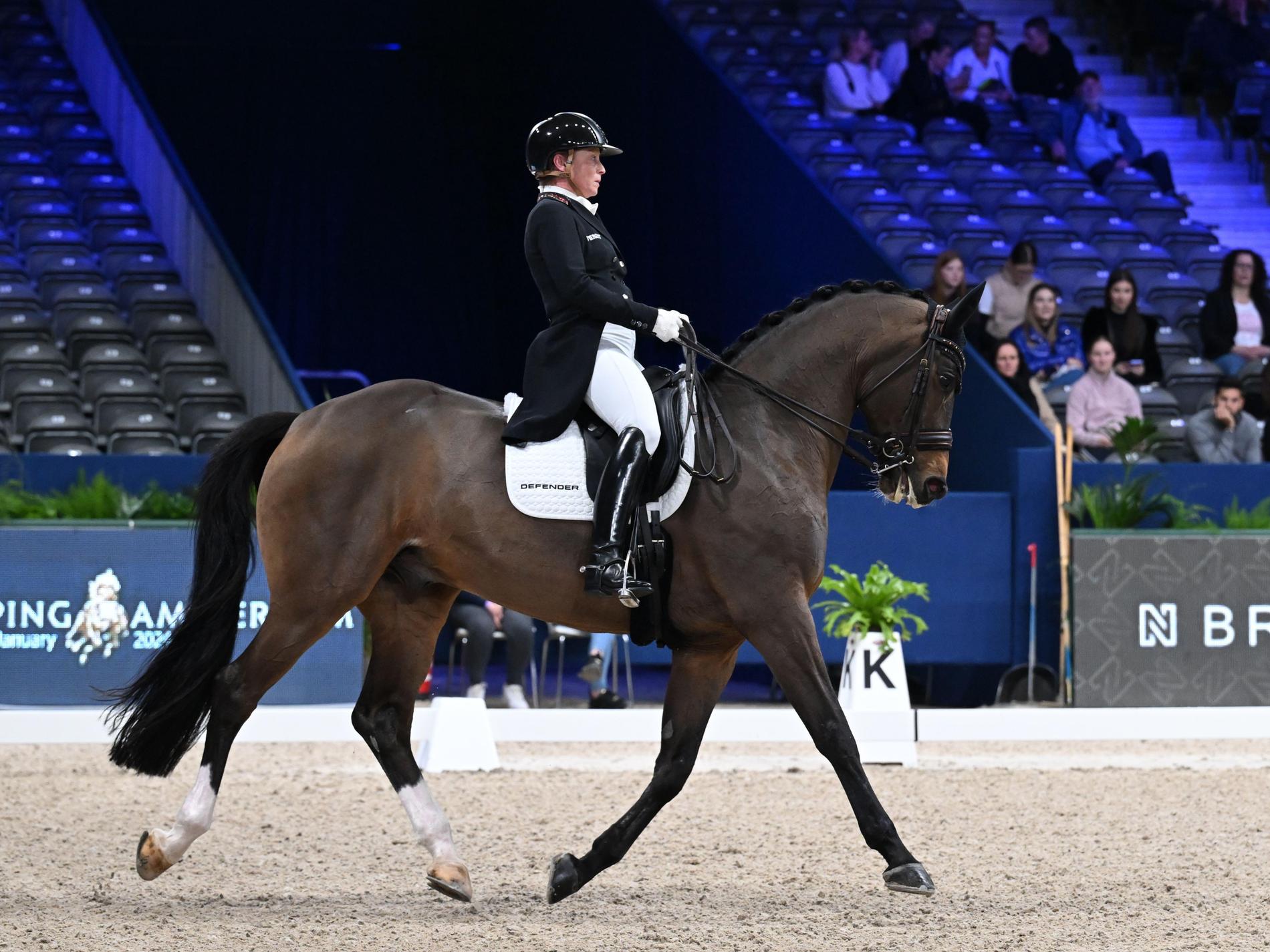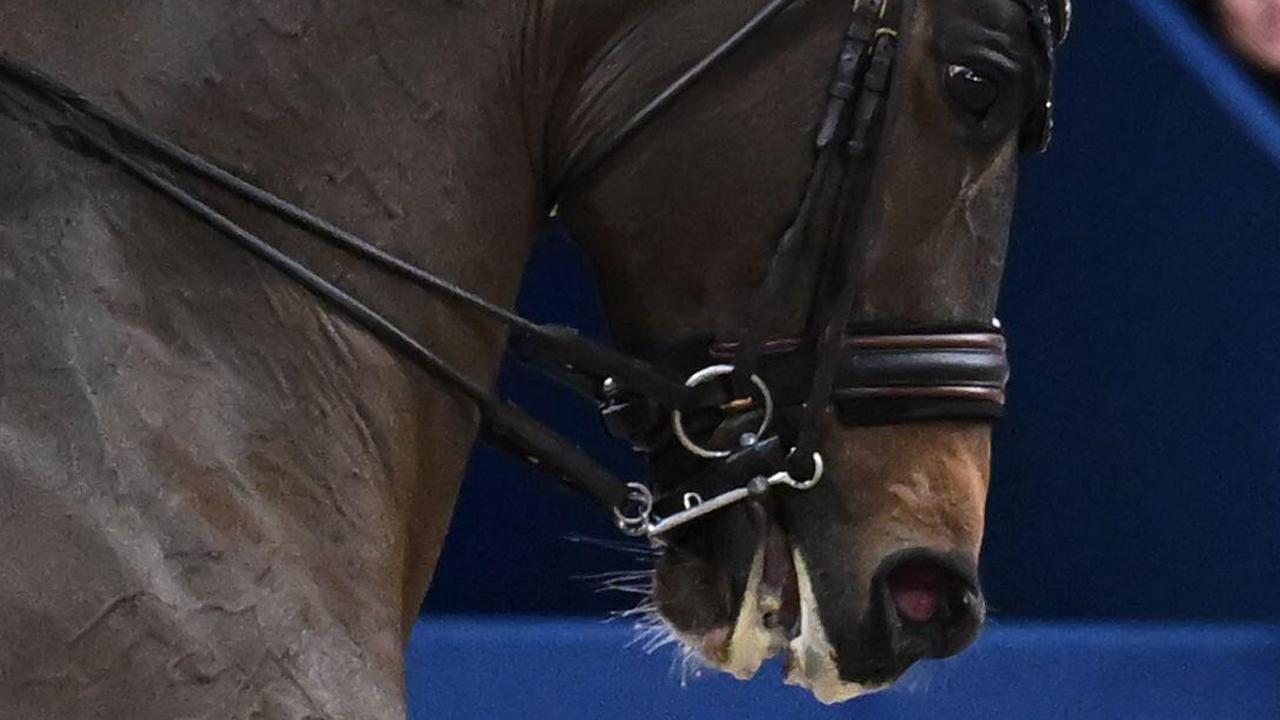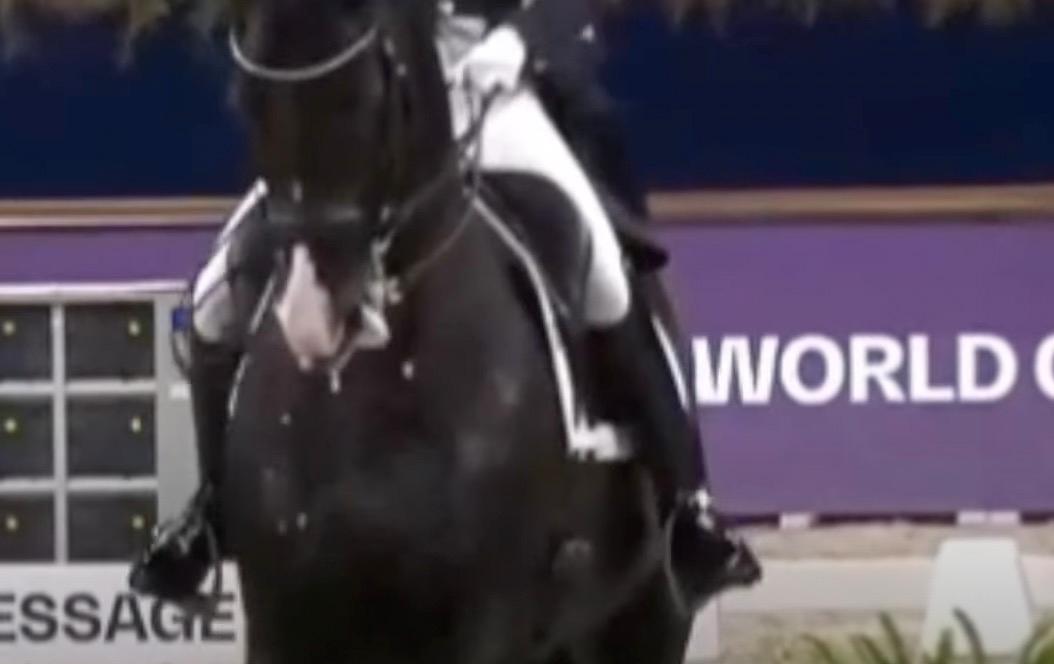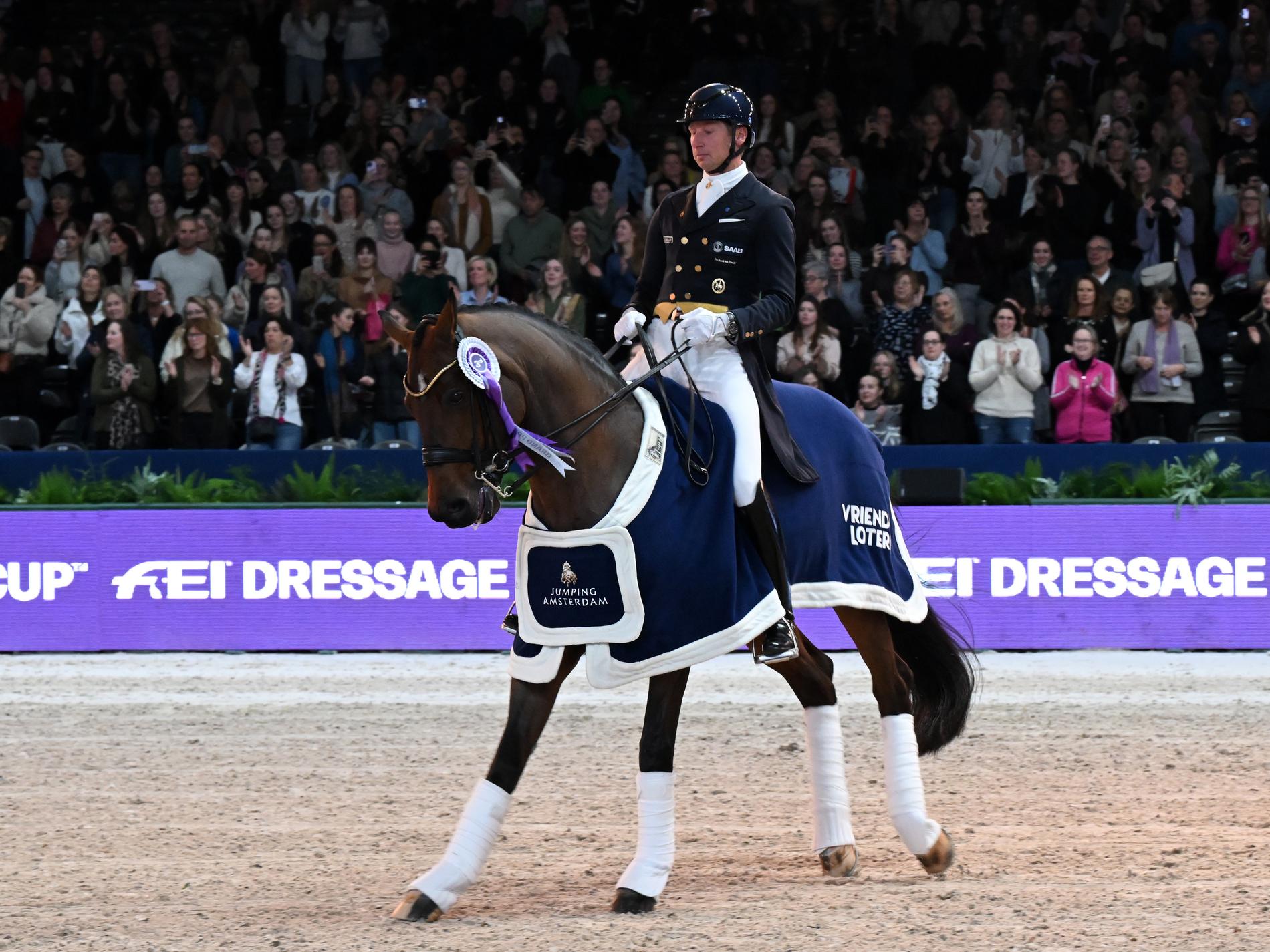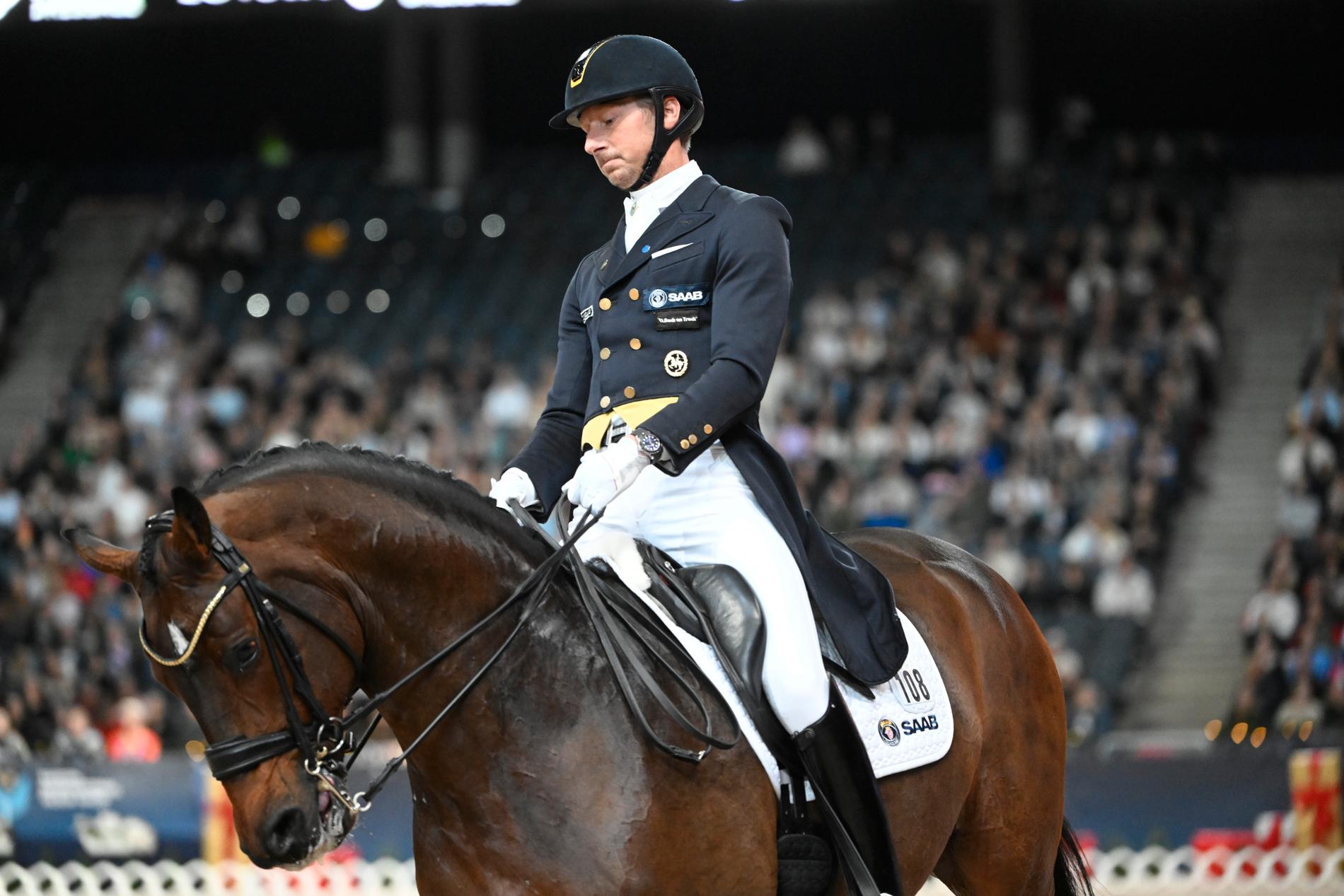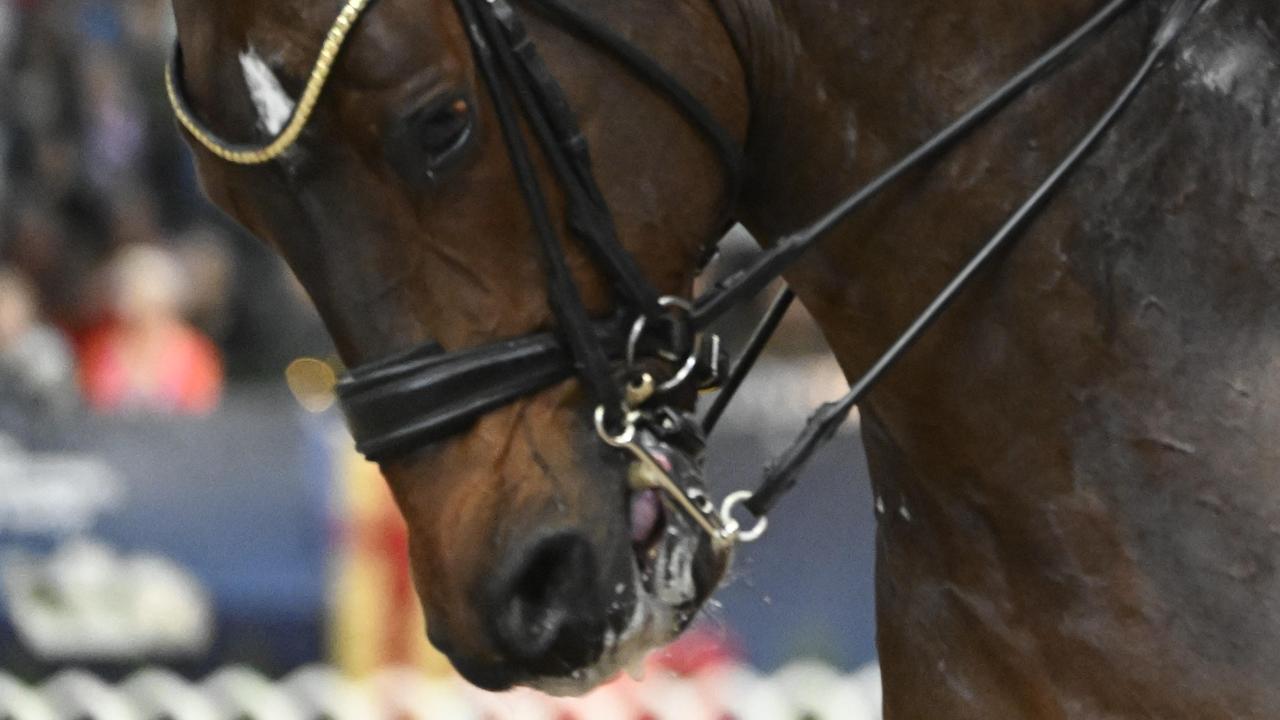Professor McGreevy: ”The horse feels considerable pain”
Publicerad 2024-04-11
World elite horses are tormented by sharp bits and strong pressure. This is shown in images from several major photo agencies.
Sportbladet has had veterinarians review images from the global photo agencies Getty Images and Alamy. Here's what one of them says about the horse of German dressage queen Isabell Werth:
– The tongue is blue-purple, the horse open its mouth to escape the pressure, says Katarina Brunstedt, veterinarian.
On March 21, Sportbladet revealed that several horses in the dressage elite had suffered from lack of oxygen in the tongue. Four different veterinarians were asked to analyze images of Patrik Kittel's, Isabell Werth's, and Charlotte Fry's horses competing in the World Cup earlier this year.
Following the review, several international dressage figures demanded changes. The Danish dressage judge and veterinarian HC Mathissen argued that the entire competition system must be changed to secure the welfare of the horses.
The German dressage figure, Thomas Baur, competition director for the Global Dressage Festival in Wellington, demanded that the FEI introduce a rule that a rider be disqualified if the horse's tongue turns blue during the program.
A week after Sportbladet's review, parts of the world's elite gathered again for a major competition. This time it was Aachen festival 4 dressage.
Magazine Eurodressage reporter Astrid Appels, who was present, reacted to that some horses foamed unnaturally from the mouth - as if the riders had used marshmallow fluff to hide that the horse had an open mouth.
Her experienced eye for the dressage elite led her to the following conclusion:
" It almost looked as if more riders than ever before, including Olympians, resorted to this trick, as if it were a traumatized response to potential activists lurking at the show, uncovering what hides underneath the foam"
Sportbladet has received tips from readers that there are more images of the world elite's horses losing oxygen in their tongues.
The newspaper has purchased some of these images and then had veterinarians review them.
Although these photographers have not endeavored to document horse welfare, the veterinarians can see things that concern them.
The first image the veterinarians reviewed was taken by photographer Gerrit van Colonge for ANP and the photo agency Getty Images. It shows German dressage rider Isabell Werth during the award ceremony at the World Cup competition in Amsterdam in January.
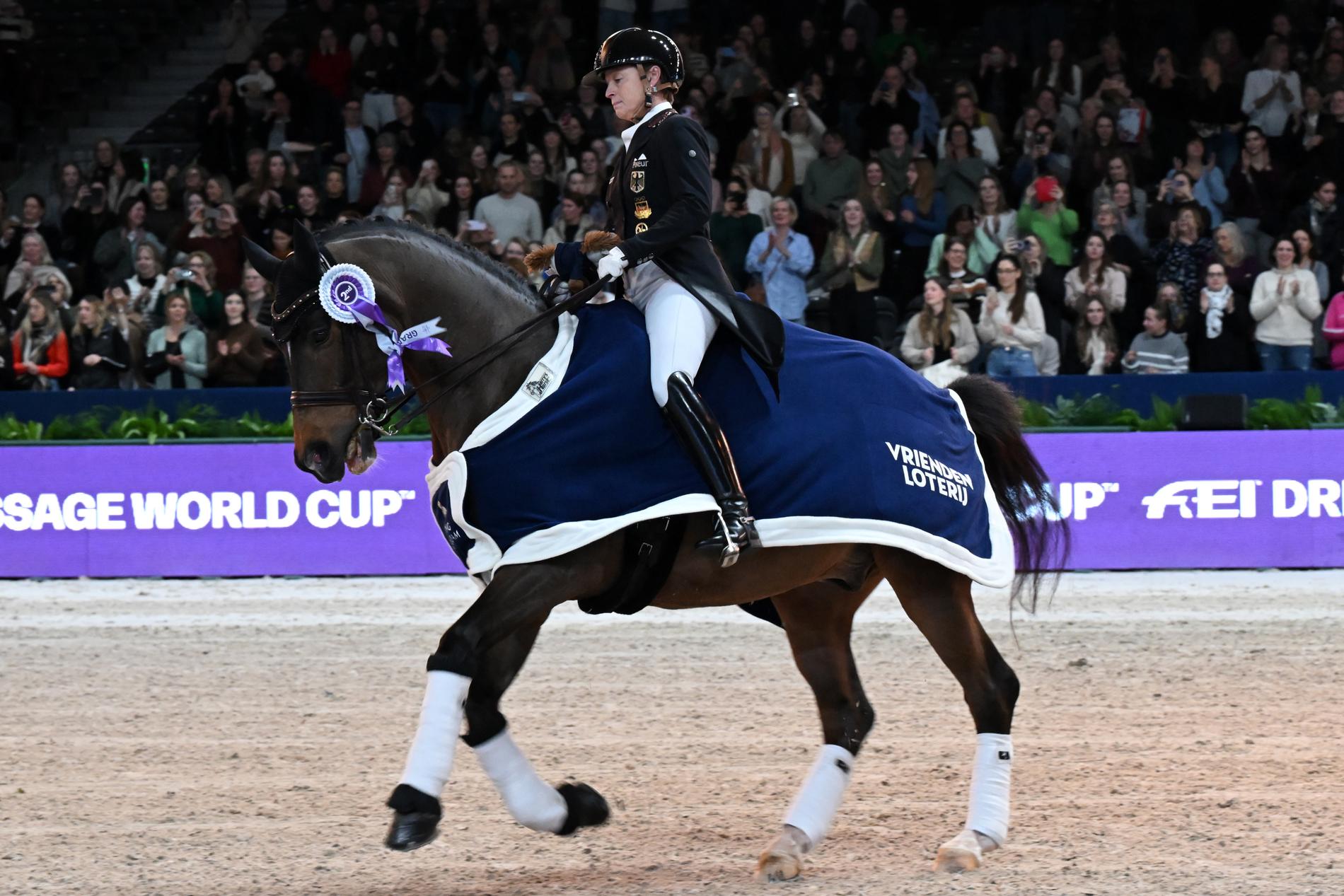
Veterinarian Katarina Brunstedt, an odontologist at the Stockholm Equine Clinic, commented on the image of DSP Quantaz at the awards ceremony:
– The tongue has a blue-purple hue due to lack of oxygen. This is caused by the bit in combination with the rider's hand creating too much pressure on the tongue. The horse gapes to escape the pressure, says Katarina Brunstedt.
Katarina Brunstedt also notes that the horse shows part of the white of its eye, which is a sign of stress or pain.
Veterinarian Kati Tuomola, who has a PhD in bit-related injuries from the University of Helsinki, also says that DSP Quantaz experienced oxygen deprivation in the tongue during the awards ceremony:
– The tongue is dark and has a blue-gray color. The blood flow in the tongue is not normal because it is subjected to pressure," she continues, "This causes discomfort or pain to the horse, and the horse shows it by opening its mouth.
Veterinarian Christine Levring, a member of the NCED, Nordic College of Equine Dentistry, and leader of an international group researching bitting, notes that the horse tries to gape and that the curb bit significantly affects this.
– The cheekpiece of the curb is nearly 90 degrees from the mouth line, which means there is a lot of pressure on the bars and tongue from this. It is recommended that the chain is tightened so that it prevents the cheekpieces from moving more than about 35-40 degrees from the mouth line.
The next image that veterinarians have analyzed is also taken by ANP's photographer Gerrit van Colonge and is available at the photo agency Alamy. It features Isabell Werth during her program in Amsterdam.
Professor Paul McGreevy notes that the horse's tongue shows signs of oxygen deprivation. He explains that in humans, oxygen deprivation in a body part causes pain. Thus, it can be assumed that it also causes pain in animals. He writes in an email:
” I’d expect this horse to be feeling considerable oral pain.
That is most probably why the horse is attempting to open his mouth against the tight noseband; a behaviour thought to damage the nasal bones .”
Veterinarian Christine Levring comments on the image:
– The horse's face does not look relaxed; the horse is gaping, the cheekpiece on the curb is very activated. The tongue is difficult to assess in this image, but it appears to be blue-gray," says Christine Levring.
Is there anything in this image that could be painful for the horse in any way?
– Yes, the high pressure in the curb bit. The cheekpiece on the curb is very activated.
Veterinarian Katarina Brunstedt also notes that there is too much pressure from the rider's hand.
– The tongue is blue-purple, the horse gapes to escape the pressure, says Katarina Brunstedt.
Sportbladet has sought a comment from Isabell Werth. Her press spokesperson responds via email that our claims are baseless and that they have contacted a lawyer. The spokesperson writes:
”If you do not refrain from further reporting on the basis of the circumstances you have now been informed of, our lawyer will take legal action against any further reporting”.

The next image features Charlotte Fry and the horse Everdale's program in Amsterdam. They won this class.
Veterinarian Christine Levring points out that the tongue is blue-gray.
– The horse is in the middle of a movement, it's hard to judge the overall impression other than the tongue appears blue-gray.
Is there anything in this image that could be painful for the horse?
– Yes. A turgid, swollen, and blue tongue, says Christine Levring.
Veterinarian Katarina Brunstedt notes that the horse is trying to escape the pressure in its mouth by gaping.
– The horse's tongue is roughly in the same line as the bridle's cheek pieces. When the bits go as far back as they do in this image, it's easy to see how the tongue can get pinched," she continues, "This horse also shows the whites of its eyes as a sign of pain or stress.
Veterinarian Kati Tuomola describes that the horse Everdale, for some reason, has an excessive amount of white foam around its mouth. The mouth is open, and the tongue has a blue-purple hue.
– Having an excessive amount of white foam around the mouth could indicate that it has difficulty swallowing its own saliva, she says.
Sportbladet has reached out to Charlotte Fry for a comment. She has not responded.
Patrik Kittel is currently ranked sixth in the world rankings. The above image is from the awards ceremony in Amsterdam and was taken by ANP's photographer Gerrit van Colonge.
Veterinarian Christine Levring reacts to the horse trying to gape, which can be a sign of discomfort or pain.
– I see a rider holding tightly to the reins and a cheekpiece on the curb that is well-tightened.
Is there anything in this image that could be painful for the horse in any way?
– A swollen, engorged blue tongue and high pressure from the curb bit on the bars," says Christine Levring.
Veterinarian Kati Tuomola also says that the horse's tongue is suffering from oxygen deprivation. She points out that the mouth is open – as if the horse is trying to escape from something.
In 2022, Patrik Kittel competed with the horse Touchdown at the Sweden International Horse Show in Friends Arena, finishing third. The image above was taken by TT's photographer Fredrik Sandberg.
After Sportbladet's investigation into how parts of the world elite's horses suffered oxygen deprivation in the tongue at the World Cup competition, Swedish Radio highlighted the issue. Radio expert commentator, Maria Gretzer, said that she was ”actually a bit shocked.” The article was published along with the image – now showing the horse's nose and mouth.
Professor Paul McGreevy pointed out to Sportbladet that the horse's tongue also shows signs of lack of oxygen in this image. He wrote:
”It is certainly an abnormal shape as a result of pressure from the snaffle bit and the leverage action of the curb bit, combined with pressure from the noseband.”
He also noted:
”The horse is hyperflexed in the neck and would be expected to have compromised respiratory function”
Trying to avoid the bit
Veterinarian Katarina Brunstedt commented on the image of Touchdown from the Friends Arena in 2022:
– The tongue has a slight blue-purple tone, the horse is gaping to escape the pressure and showing the whites of its eyes.
She also feels the noseband is too tight:
– It looks like the noseband is very tightly fitted against the soft tissues of the horse's face. Many tighten it very hard to have more control over the horse and prevent gaping, which can lead to point deductions. It's very uncomfortable for the horses and can affect blood circulation and make it difficult for them to swallow and gape.
Veterinarian Christine Levring finds it harder to assess the status of the tongue in this image:
– The tongue is on its way to turning blue but is not completely engorged, although the horse looks a bit uncomfortable.
Veterinarian Kati Tuomola, like Paul McGreevy, points out that the horse's neck is bent downwards. She notes that the horse is ”behind the hand” (a riding term for when a horse tries to avoid the bit and tucks its nose in, editor's note). She also sees other signs of discomfort in the horse:
– There is an excessive amount of foam around the mouth, and the horse is gaping.
Sportbladet reached out to Patrik Kittel for a comment.
He conveyed through the national team's press contact, Matilda Hjertstrand, that he declines to comment this time.
Inadequate control
Many riders in the world elite use additional padding under the noseband. In a previous article by Sportbladet, veterinarians explained that it is common for the noseband to be tightened significantly to conceal what is happening in the horse's mouth.
During competitions, stewards are supposed to ensure that the rider has not tightened the noseband excessively. According to FEI rules, the check is performed by the steward inserting their index finger between the horse's cheek and the noseband.
Veterinarian Kati Tuomola opposes this method, arguing that it is insufficient. She explains that it is the wrong place to insert a finger. On the side of the horse's head, it's relatively easy to fit something—even if the noseband is tight.
– At that spot, you can always get four fingers in. So this is a kind of 'welfare washing', one might say. It should really be measured on the top of the nose bridge and with at least two fingers.
When Sportbladet asked the FEI why the check is conducted with a finger on the side of the horse's head, an FEI spokesperson said that they are developing a different measurement method. They wrote:
”FEI is exploring, in accordance with the recommendations from the Equine Ethics and Wellbeing Commission, a way to harmonize the approach for measuring the tightness of the noseband across all FEI disciplines using an objective measuring tool.”
According to the spokesperson, the measuring tool will be tested during 2024, and the plan is to implement it on January 1, 2025.
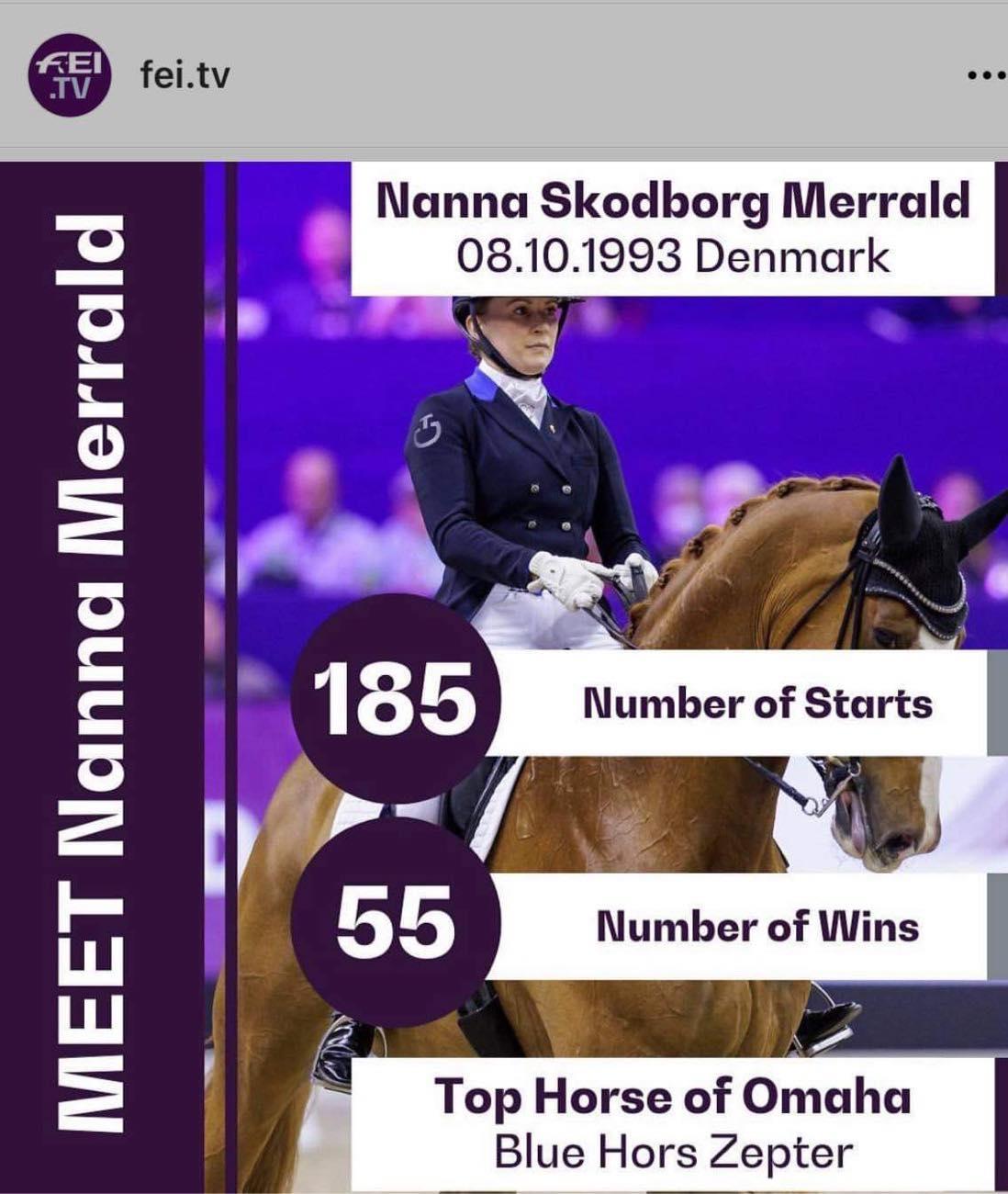
FEI removed image
Sportbladet has also received tips from readers that the FEI had published an image of the Danish dressage rider Nanna Skodborg Merrald riding the horse Blue hors Zepter.
It was on FEI's website over a year ago but has since been removed.
The image was widely discussed on social media by Danish equestrians.
19-year-old Ronja, one of the Danish horse owners, reacted to the image.
– I saw that someone had shared the image and then I went to look at it. I wasn't surprised. I've seen other images of dressage horses with blue tongues.
She thinks it was wrong of the FEI to remove it.
– I think it's absurd. They removed it after there were comments. It shows why the equestrian world is where it is right now. They remove anything bad. So you don't get to see it. It turns into a happy facade.
Veterinarian Christine Levring says about the image:
– The tongue looks blue and engorged from the curb bit. It has the 'worry wrinkle' over the eye. She (the rider, editor's note) has a fairly high pressure in the snaffle, as the lip corner is drawn far back."
Veterinarian Katarina Brunstedt agrees that the tongue appears to have lost oxygen.
– This horse has a blue-purple tongue, gapes to escape pressure in the mouth, and shows the whites of its eyes which is a sign of stress or pain," she continues:
– I don't think anyone intentionally wants to do this to their horse, but it happens all too easily with the equipment that is allowed, and even required at some competitions, combined with how the rides are judged."
Sportbladet reached out to Nanna Skodborg Merrald for a comment on what appears in the image and the fact that it was removed. She has not responded.
We also asked the FEI why they removed the image and if they have taken any action regarding what appears in the image.
FEI wrote in an email:
”The post was displayed on FEI.tv’s social media account, which is managed by an independent partner. The FEI Digital team is investigating the circumstances surrounding the publication and subsequent removal to understand the reasoning behind these actions, and will work to address the situation appropriately.”
Following Sportbladet's publication about how three top riders' horses suffered from oxygen deprivation in their tongues during competition, the international equestrian federation, FEI, has sent emails requesting to have images sent to them.
Sportbladet has offered to meet with FEI at a meeting where we would show the images we published on March 21 and a number of other images – showing that more horses than those included in the review had oxygen-deprived and blue-colored tongues during their program.
We have offered to go to FEI's headquarters to show the images. Or to host representatives from FEI here in Sweden if they prefer to travel here.
FEI has not accepted this offer.
In email correspondence with FEI, we also asked if there has been an official complaint filed with them due to our publication or if they have initiated their own review of the matter.
FEI has left that question unanswered.
This text has been translated with support of OpenAI:s Chat GPT and checked by Aftonbladet. Read the original article in swedish here.
